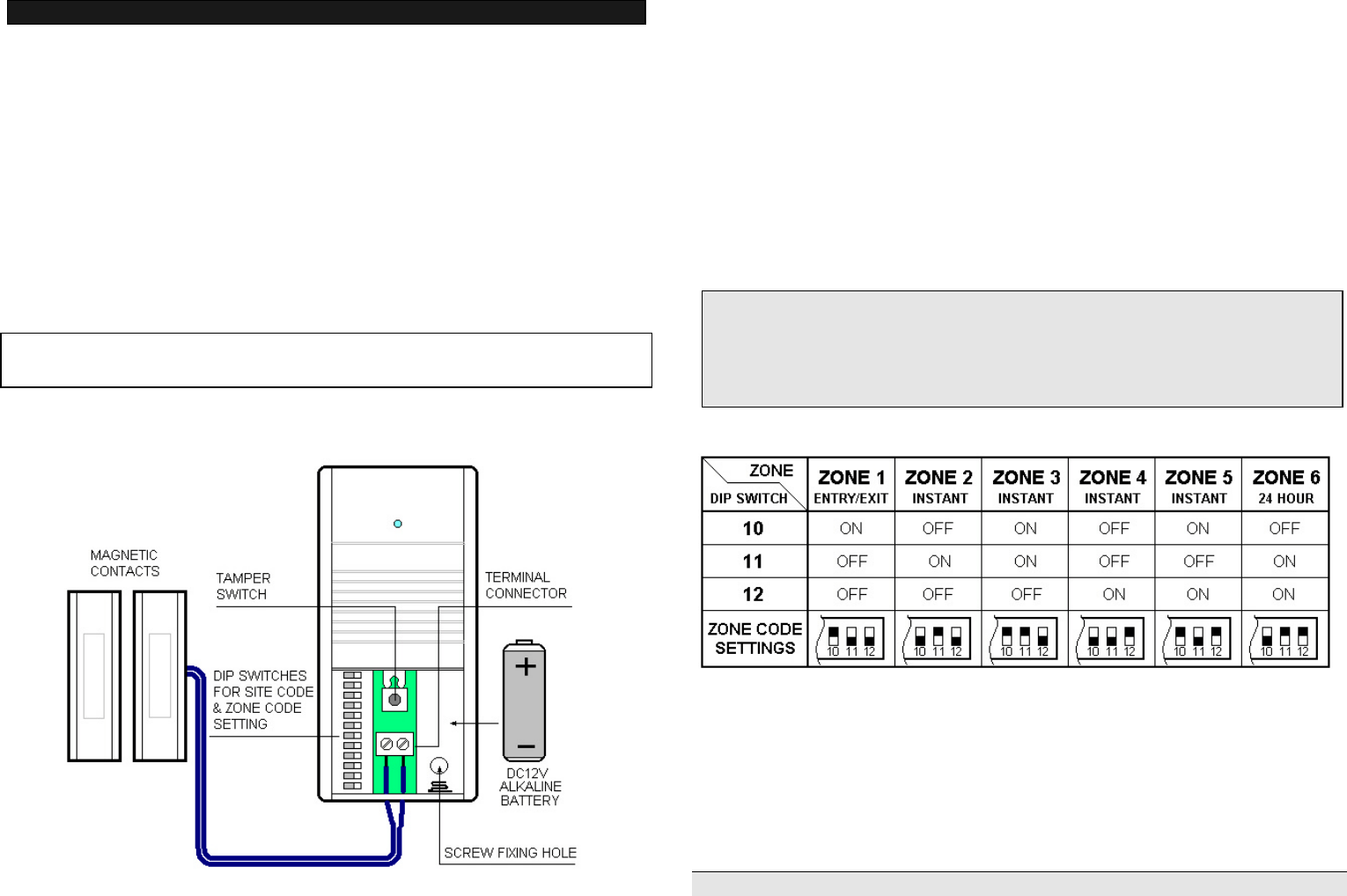Aeonstar Technology UT-03 Universal Transmitter User Manual Tx 0123manul
Aeonstar Technology Corp Universal Transmitter Tx 0123manul
user manual

Universal Transmitter TX-0123
COMPATIBLE WITH 3000/5000/6000 SERIES WIRELESS HOME SECURITY SYSTEM
INSTALLATION
1. Remove the battery cover
2. Select your own Site Code by sliding the Side Code DIP Switches 1-9; make
sure it is identical to that of the control panel.
3. Select the Zone Code for this transmitter. (See ZONE CODE TABLE)
4. Install a DC 12V alkaline battery (not included).
5. Connect the detector N/C (Normal Close) you select to work with this
transmitter.
6. Mount the transmitter on the location you have selected.
CAUTION: If the unit is mounted close to metal frame or doors this
may reduce the transmitting range. DON‘T FORGET to test the
detector after installation.
Example: Installing the Universal Transmitter Tx-0123 to be connected with
door/window magnetic contact.
TESTING (Example: connected with door/window magnetic contact)
1.
Set the Control Panel in TEST/BATTERY CHANGE mode before testing the
system.
2. Trigger the magnetic contact by opening the door or window to observe the LED
indicator on the magnetic transmitter.
3. The chirps from the control panel will sound and correspond to the zone nos.
that the detector operates on.
4. You may wish to repeat the above steps while the system is in ARM mode. By
this way you can confirm correct operation and simulate the entry of a Burglar.
Keep your remote control handy for disarming the system after alarming.
ZONE CODE TABLE
You can select the Zone you wish to use the detector on by sliding the Zone Code
DIP Switches 10-12 as shown in the table below.
NOTE
Be sure to change the Zone Code from the maker‘s initial setting in order to meet
your own requirements.
The Changes or modification not expressly approved by the party responsible for
compliance could void the user’s authority to operate the equipment.
ZONE CODE SWITCH SETTINGS
REMARKS:
1. The Universal Transmitters can be used for a number of functions. The most
popular is protection of doors and windows; however, the unit can be connected to a
panic switch and by setting all Zone Code Switches to OFF, the Panic Zone can be
activated. This is ideal as a fixed Wireless Panic Alarm.
2. The detectors connected with the transmitter should be N/C type (normal close).
Or momentary N/O (normal open) type.